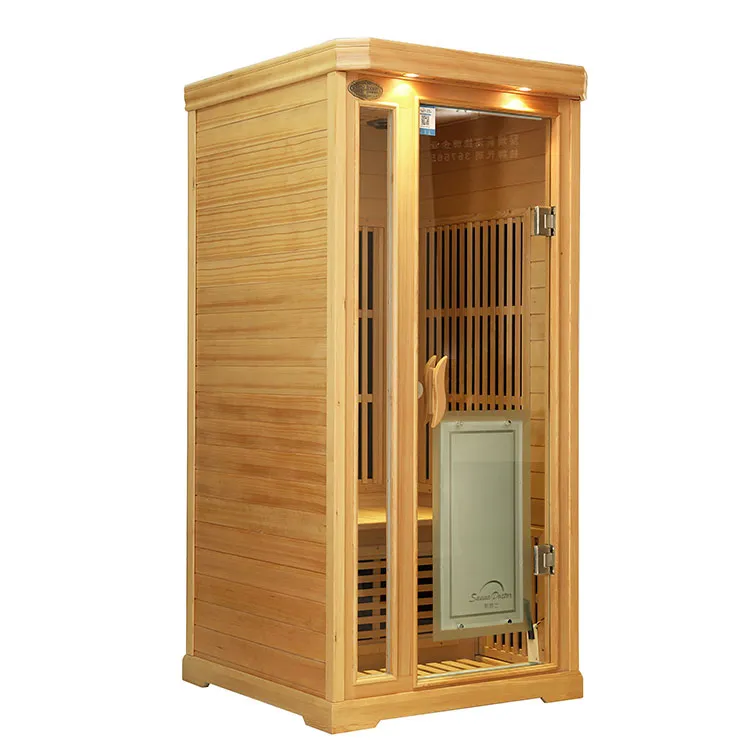How to Choose the Perfect Wooden Sauna Room for Your Home
2024-09-07
Adding a wooden sauna room to your home can elevate your relaxation and wellness experience, but with so many options on the market, it can be overwhelming to decide which sauna is right for you. From the size and design to the heating options and materials used, there are several factors to consider when choosing the perfect sauna room. In this blog, we’ll break down the essential features to look for when selecting a wooden sauna for your home, ensuring you get the best experience possible.
1. Choosing the Right Size and Capacity

The first step in choosing a wooden sauna is determining the size that suits your needs and the available space in your home. Saunas come in various sizes, from compact one-person models to larger units that can accommodate up to six people. If you plan to use the sauna solo or with your partner, a smaller unit will suffice. However, if you plan to entertain guests or have family members join in on the relaxation, you might want to consider a larger model.
- Tip: Measure the available space where you plan to install the sauna and consider how many people will be using it regularly.
2. Selecting the Right Type of Wood
The type of wood used in your sauna can significantly affect its performance, durability, and overall aesthetic. Common wood choices include cedar, hemlock, and spruce. Cedar is a popular option due to its natural resistance to moisture, rot, and insects, as well as its pleasant aroma. Hemlock, on the other hand, offers a smooth, modern look and is hypoallergenic, making it an excellent choice for people with allergies. Spruce is a budget-friendly option that still offers durability and a classic sauna look.
- Tip: Consider the wood type based on durability, aesthetics, and whether you have any sensitivities or allergies.
3. Choosing Between Electric, Infrared, or Wood-Burning Heating
The heating method of your sauna is one of the most critical decisions you’ll make. The three main types are electric heaters, infrared panels, and wood-burning stoves.
- Electric heaters: These are the most common and heat the air inside the sauna to a high temperature. They are easy to install and offer precise control over the temperature.
- Infrared panels: Instead of heating the air, infrared saunas use infrared light to heat your body directly. This provides a more gentle and gradual heat, which some people find more comfortable.
- Wood-burning stoves: These traditional heaters give a more rustic experience and are typically used in outdoor saunas. They provide a more authentic sauna atmosphere but require more maintenance and preparation.
- Tip: Choose the heating method based on your personal preferences for heat intensity and ease of use.
4. Indoor vs. Outdoor Sauna
Another key factor to consider is whether you want an indoor or outdoor wooden sauna room. Indoor saunas are convenient, especially in colder climates, as they can be easily accessed from within your home. They also tend to blend seamlessly with your existing interior design. Outdoor saunas, on the other hand, offer a more immersive experience, surrounded by nature. They are great for homes with garden space and can be designed as standalone structures, providing a relaxing retreat just steps from your door.
- Tip: Consider your home layout and climate when deciding between an indoor or outdoor sauna.
5. Additional Features and Customizations
Modern wooden sauna rooms come with various customizable features that can enhance your sauna experience. Look for options like built-in lighting, Bluetooth speakers, or chromotherapy (color light therapy) to create a more relaxing atmosphere. Some saunas also offer aromatherapy systems, allowing you to infuse the air with soothing essential oils.
- Tip: Think about how you want to use your sauna and choose additional features that will enhance your relaxation and wellness routine.
6. Energy Efficiency and Maintenance
It’s essential to consider the energy efficiency of your wooden sauna, especially if you plan to use it regularly. Look for models with energy-efficient heaters or those made from eco-friendly materials. Additionally, consider the ease of maintenance – cedar, for example, requires minimal upkeep compared to other wood types.
- Tip: Opt for energy-efficient saunas and materials that require less maintenance to keep your sauna in top shape.
Conclusion
Choosing the perfect wooden sauna room for your home is a process that requires thoughtful consideration of your space, preferences, and lifestyle. From selecting the right size and wood type to deciding between various heating methods and additional features, each factor plays a role in creating the ideal sauna experience. By taking the time to research and plan, you can ensure that your sauna room becomes a cherished space for relaxation, wellness, and rejuvenation for years to come.


